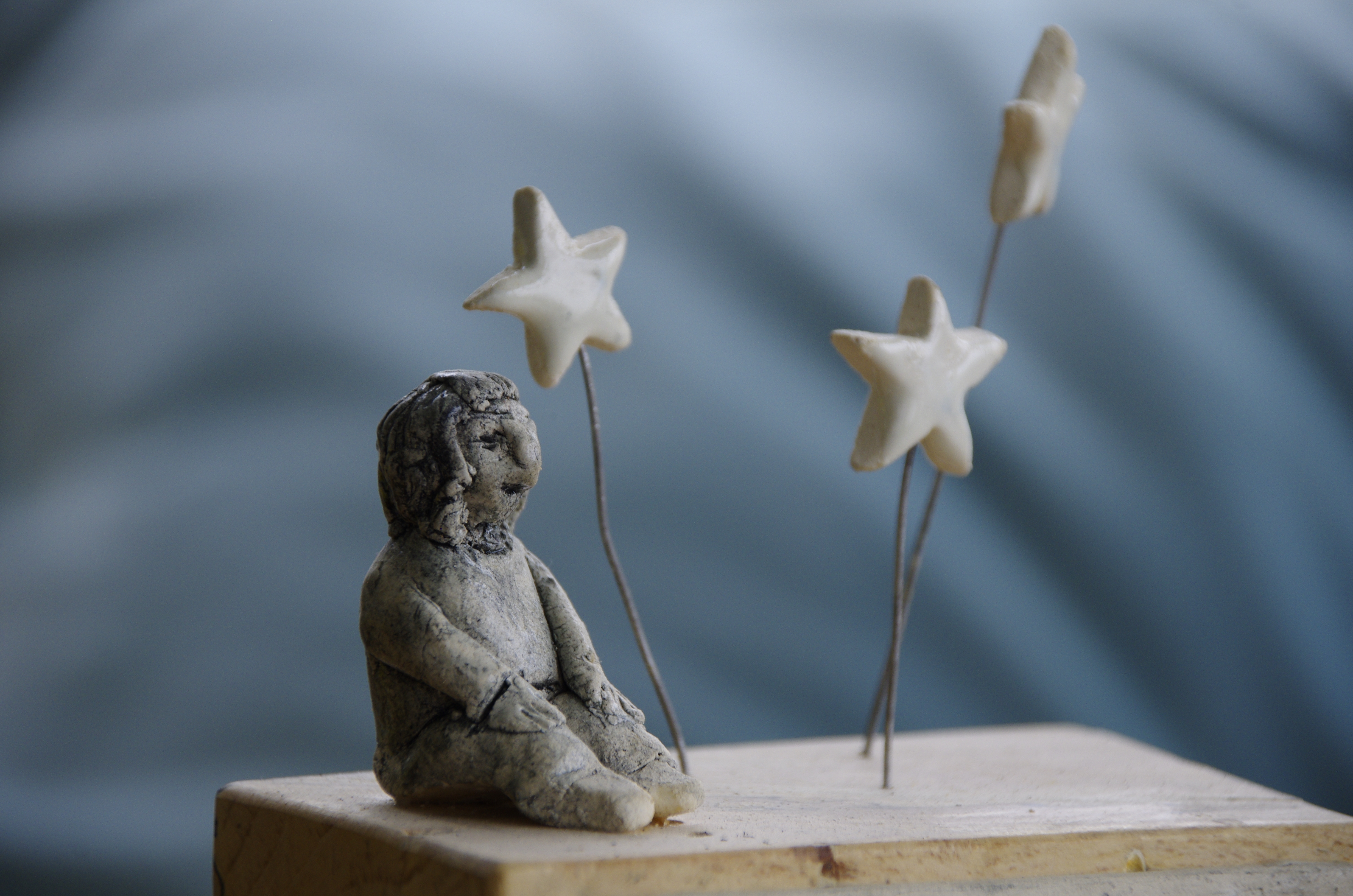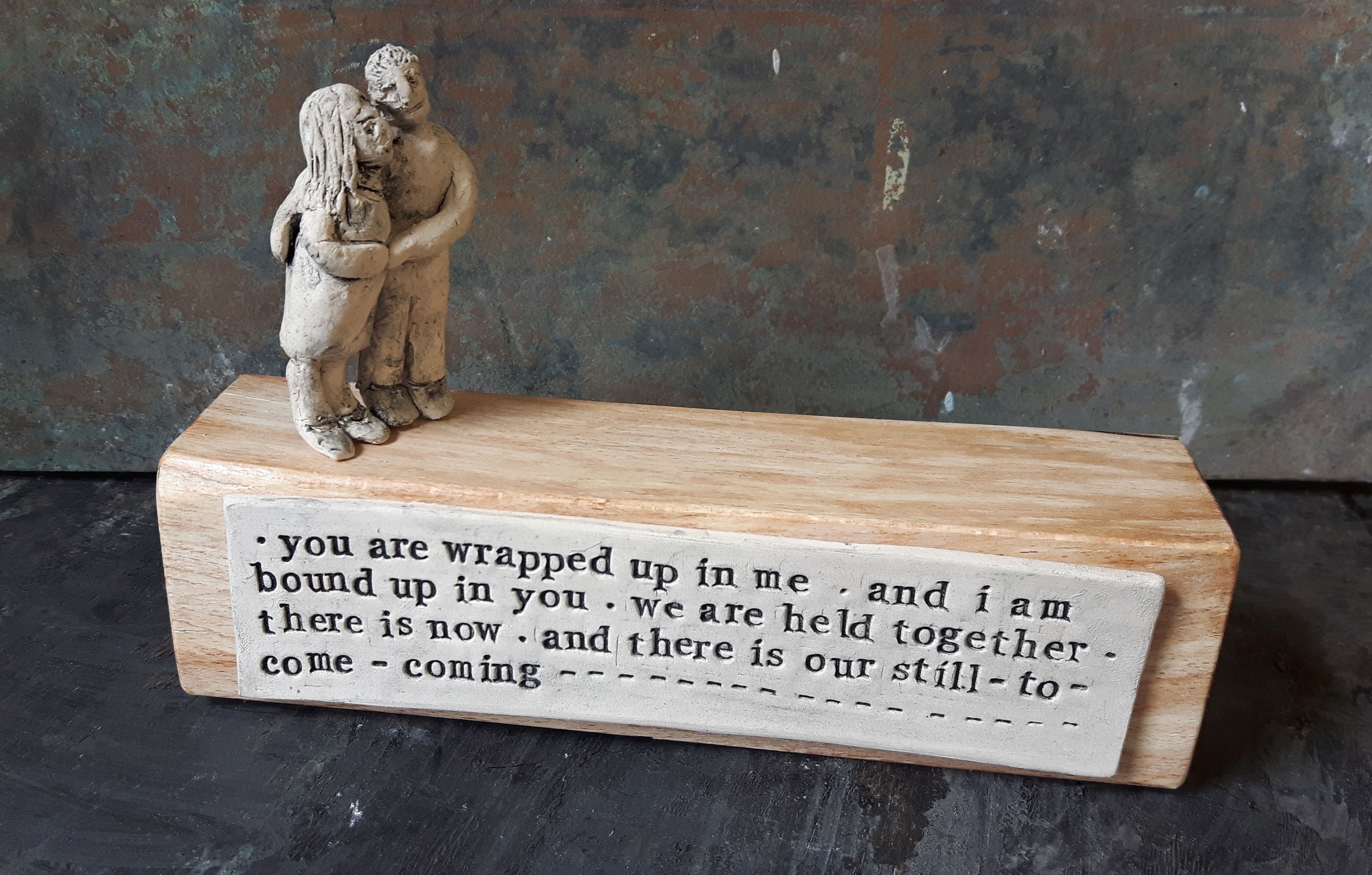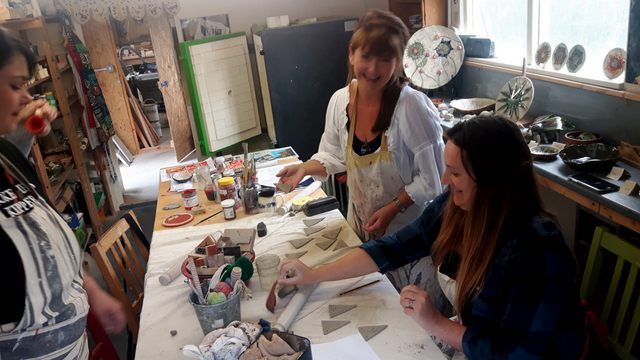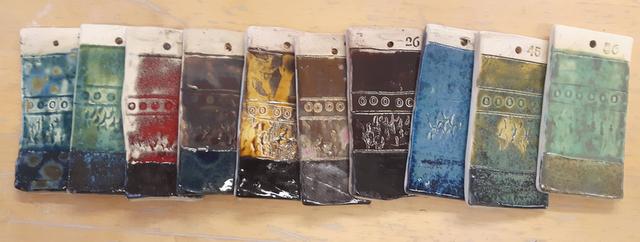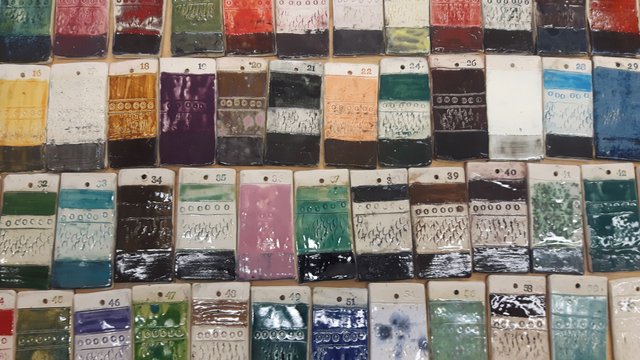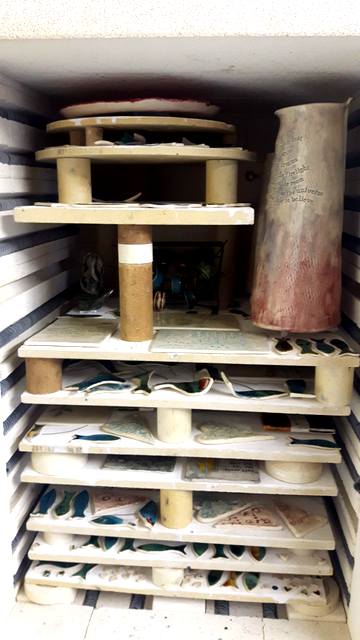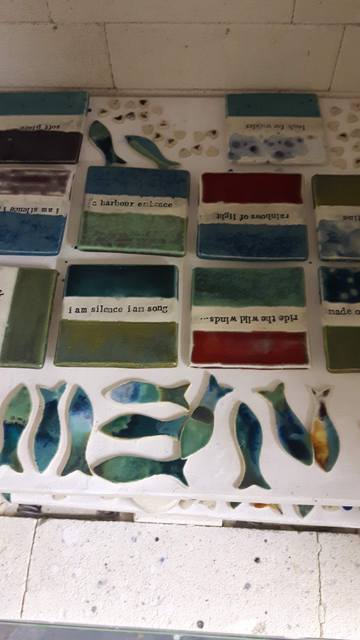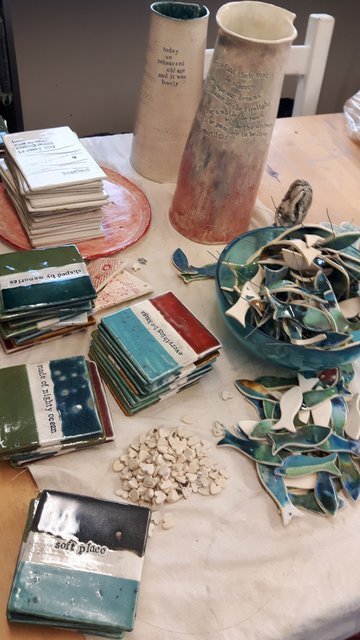Chris used to be a mental health professional and Michaela was formerly a counsellor, so mental wellbeing has always been part of our thinking at Seatree. This is a re-post from Chris’s blog (www.thisfragiletent.com), as we wondered whether it might be helpful to other frustrated and stressed creatives out there.

Understandably, there is a lot of fear around at the moment.
Most of us are living with background anxiety, which is almost unnoticed, a bit like the noise from a ceiling fan which we will only realise is there when someone switches off.
Then there are those spikes of things that approach dread and terror, perhaps when the threat posed by the virus comes closer to us or someone we love, or when we see empty supermarket shelves, or when we think about the consequences of our income security being undermined.
Some of us are suffering more than others- perhaps you are not sleeping, or noticing a spike in blood pressure. Perhaps the stress is triggering migraines or even panic attacks. If so, you are not alone. We are all feeling it, one way or another.
What can we do to manage this anxiety? I’ve been thinking about this a lot. It used to be part of my job to support people who were suffering from anxiety, back when I was a CBT therapist, so I really should know something about this stuff. In many ways this feels different though, because what we are going through is a shared experience, despite the fact that the lock down is putting is all into our own little boxes to suffer alone. It is like sitting in an Anderson shelter back in 1940, but the bombs are silent.
But that kind of thinking does nothing to dispell anxiety, right? And actually, the war analogies are perhaps being overdone. The comparisons between now and then soon come unstuck when you think about it.
What we used to talk about when we put together a plan of managing anxiety is identifiying things that do not help (in the sense that they perpetuate the anxiety) and trying to do less of them, and then indentifying some things that do help, and doing more of them. The realistic aim is never to dispell anxiety alltogether, rather it is to recognise it and reduce it when it comes in such a way that love and life becomes possible again.
So can we apply some of this thinking to our current situation?

Identifying the things that might be making things worse
In my old CBT days, we would look for two patterns; firstly, we would look in detail at some the last time an anxiety incident really spiked. We would consider what triggered it, and what ‘automatic thoughts’ arose in us at the time.
By ‘automatic thoughts’ we meant those ideas about ourself and the world that sit just below consciousness, shaping our actions and reactions. Most people struggle to identify these at first- after all, the are mostly subconscious. One tirck is to ask yourself some simple questions in relaiton to the incident; What does it say about me that I reacted like that? What does it say about other people? What does it say about the world? Pretty soon, what begins to emerge is a set of clues as to what is pushing us towards anxiety, and why we are being so hard on ourselves.
In coronavirus terms, some of us are more vulnerable to anxiety because of the automatic thoughts that we already carry with us. “I am not someone who copes well with things” “My mother always said I was weak” etc. The thing is, we can’t change these ideas overnight, but it can help to identify the pattern. Simply put, the universe is giving us a bit of a kicking right now, but there is no reason to join in. It is important to be kind to yourself, and realise that you, like all of us, are doing the best that you can.
The second pattern we would look for would be what we called ‘safety behaviours’, by which we meant those habits, patterns of coping and self managment that evolved alongside the anxiety itself. The strange thing is that many of the things we do to help us cope do not help at all in the long run. At best they stop our nervous systems from finding more healthy ways to deal with the anxiety, at worst they become a problem in their own right. Two examples that spring to mind from both ends of the spectrum are as follows; people faced with social anxiety will often use a mobile phone as a ‘fidget’ and way of distancing themselves within social situations. Nothing wrong with this, right- we all do it a bit. But then ask the same person to imagine going in to a social situation without their phone, and a pattern of dependency might be revealed that actually perpetuates the social anxiety, but does not make it go away. In this way, something that starts out to be a good thing, helping us enture the social sphere eventually leads us down an backwater which we find hard to escape from.
A more extreme version of this is somone who uses substances to suppress comlex emotions and anxiety- this might range from drugs/alcohol through food and even the dopamine highs of sex or anger. Which of us can honestly say we have not done one or more of these things? Having a drink might even be socialy subscribed within our culture, despite the huge problems this brings in to the lives of many people.
So, in the age of coronavirus, what safety behaviours have we been reaching for? Remember, this is not intended to beat you up- we are all being kind to ourselves, right? But perhaps it is good to be honest, and recognise where these might be potentially problematic.
here are three common safety behaviours that I would like to emphasise that I think we have all been drawn towards at present.
- Anger. Faced with fear and uncertainty, we humans have the propensity to look for people to blame. In most complex situations (such as a pandemic) it is hard to find a target for this blame, so instead we have this unfortunate tendency to scapegoat. We look for others who are ‘less than’- whose behaviour or attitudes can be seen as somehow reprehensible. This turns to anger because ‘they’ are ‘putting us at risk’ or ‘stockpiling food so that I can’t buy beans’ (the last one being one of mine!) Anger like this however is a dangerous drug. It reduces complexity to apparent black and white simplicity and it potentially makes victims in a situation where there is quite enough trouble all ready.
- Infotainment overload. Faced with fear and anxiety, we are all glued to our screens. Of course, the internet is an incredible gift to us in lock down, allowing us to connect and communicate in ways inimaginable a short while ago. Of course, it can all be a bit too much though, right? Do we really need to rolling news to be on the TV all day, cycling though the same tales of doom? Does it help us? Social media brings an even greater mixed blessing, as it enable people to vent anger and strong opinion. Screen based communication has this way of not being real, but instead being ‘hyper-real’- a polished up, simulated version of reality. We are not ourselves on Facebook, we are our hyperselves. The virus is not real on Twitter, it is hyperreal (with a load of expletives thrown in for good measure!)
- Stockpiling. It is not US who are responsible for the empty shelves. It is THEM. But how many of us have changed our shopping habits, even if just a little? This is not a phenomenon of the greedy careless individual (no matter how this might be portrayed on our screens) rather it is what happens when fear enters into the consciousness of every single shopper. So, I might buy 6 tins of beans when I normally buy 4 and then the twenty people after me do the same, which means the twenty first person goes beanless- which is a terrible place to be! I have also joked about panic gardening, because those extra turnips and courgetes might be the difference between life and death! Of course, there ain’t nothing wrong with a bit of veg planting, and actually I think we should all be doing it anyway, but I recognise that for me, this is a safety behaviour

Indentifying what we can do that will help
This emerges from the discussion above, because we are all different. However, I started to make a list of things that might help. Here we go…
- Limit screen time. Not for everyone, because we are addicted. But what about those books you were going to read? Is it time to get the guitar out again? How about checking the news just twice a day, and limiting Facebook to once or twice too?
- Switch off notifications on your phone. Related to the point above.
- Look for ways to help, if you are able. One of the best ways to feel alive is to love. Love comes in many forms. It might be doing some shopping for someone else, or it might be a phone call to someone you have not heard from for a long time but you know will probably be on their own. Inversely, those who get the most out of helping others are often those who need the most help themselves.
- Avoid worst case scenario thinking. There will be an inevitable time for asking ‘what if’ but if we stay there, it can become a worm hole into anxiety. Give yourself some time for these questions, then try to move on to something practical and positive.
- Keep your communication kind. At risk of getting all soft and squishy, social media is often a race to the bottom. We all get sucked in to a good scandalised whinge sometimes. Now more than ever, resist. Let’s try and out-kind one another.
- Divide your time into useful blocks. Particularly those self isolating or in lock down at home, the days can be very long. It can help to set a daily agenda- a bit like the morning ‘Parliament’ on St Kilda, where each day, the men (and it was just the men, the women were too busy) met to decide the work of the day.
- Keep physically active. Did you see the story about the bloke who ran a marathon on his 7 meter balcony? That might be a bit extreme, but nothing reduces anxiety like aerobic excercise. Make use of this each day- if you can’t get out of the house, there are loads of other excercise options. Remember those old Jane Fonda videos on Betamax in the back of the cupboard?
- Talk to someone. For intorverts like me, lockdown has some real advantages. I like to be in my own internal space, but I know too that if I am in there too long it is not good for me. If you are feeling isolated and alone, then reach out. Ask someone if they would be your virus-companion. A little can go an awful long way.
- Get outside if you can. Green spaces change things inside you. This is not just tree-hugging cant, it is scientific fact. Check this out if you don’t believe me. We have the gift of spring bringing renewal all around us, go and immerse yourself in it. Celebrate it.
- Do something new. Learn origami. Take up bridge. Write poetry. Use the time you have been gifted with for something new.
- Look for grace, not grievances. To a certain extent, fear arises not only from circumstance, but from the part of that circumstance that you attend to. If you look for cynicism and anger you will find it. If you look for hope and stories of human goodness, they are there in abundance too. Which ones will find greatest traction on social media? I refer you back to the start of this list. That is not to say that we live in unreality, but rather that we choose to celebrate the grace that is all around us when we can.
- Take moments for stillness. I read a beautiful poem recently in which the poet described what we are going through right now as ‘the great silence’. The best that could come out of this for our nation and for our planet is that we might take this time to pause and consider our path to this place and the road we might wish to take beyond. Perhaps meditation or prayer might help. Or perhaps it is enough to listen to birdsong.
- Laugh as often as you can. Look for the absurd in yourself and the world. We Brits are supposed to be good at this, right? After all, nobody espected the Spanish Inquisition, or Coronavirus. The other day we went for a walk and met a couple walking down a track. They looked terrified and scurried by, hugging the fenceline, keeping as far from us as possible whilst watching in case we made a movement towards them. Unfortunately, the woman walked into a tree. You have to enjoy that, surely?
It has been said that the most often used command recorded in the Bible is this one; do not fear. Easy for Jesus to say, harder for us to impliment. Religion is certainly no antidote to anxiety.
But we humans do need to search beyond our current cirumstance into the beautiful beyond. Don’t lose your wonder. Remember the mystery that is beyond everything. The universe is not done with us yet.
Keep safe friends, and let’s meet on the other side.


